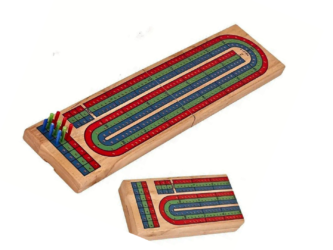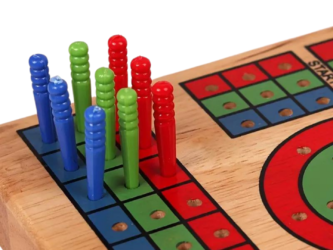Cribbage
Cribbage
Cribbage is a classic card game that has delighted players for centuries with its unique blend of strategy, chance, and social interaction. Originating in the 17th century, this game continues to be a favorite among card enthusiasts around the world. In this article, we’ll explore the history, rules, strategies, and the reasons why Cribbage remains a popular choice for players of all ages.
What is Cribbage?
Cribbage is a two-to-four player card game that uses a standard 52-card deck. The objective is to be the first player to score a set number of points, typically 121, by forming combinations of cards in hand and pegging points on a distinctive Cribbage board.
The Cribbage Board
One of the defining features of Cribbage is its scoring board, which consists of a series of holes for pegs. Players advance their pegs along the board based on the points scored during the game. This visual representation of progress adds an engaging element to the game.
History of Cribbage
Cribbage was created by Sir John Suckling, an English poet and gambler, in the early 17th century. It has evolved over the years but has retained its core mechanics. The game gained popularity in England and eventually made its way to America, where it became a beloved pastime in homes and pubs.
How to Play Cribbage: Basic Rules
Setup
- Players: Cribbage can be played with two to four players, but it is most commonly played with two.
- Dealing: Each player is dealt six cards, and they must choose two cards to place in the “crib,” a separate hand that will be scored later.
- The Starter Card: After the crib is set aside, the dealer reveals the top card from the remaining deck. If this card is a Jack, the dealer scores an additional two points.
Scoring Points
Players score points during the play and when counting their hands. Here are some common ways to score:
- Pairs: Two cards of the same rank score two points.
- Runs: Three or more consecutive cards score points equal to the number of cards in the run.
- Fifteen: Any combination of cards that adds up to fifteen scores two points.
- Flush: Four cards of the same suit in hand score four points, while five cards (including the starter card) score five points.
The Play
Players take turns playing one card at a time, trying to create scoring combinations as they go. The player who lays down a card that brings the total to 15 or 31 scores additional points.
Strategies for Winning at Cribbage
While Cribbage involves luck, strategy plays a significant role in winning. Here are some tips to enhance your game:
- Choose Your Crib Wisely: When selecting cards for the crib, consider whether it’s your crib or your opponent’s. This choice can impact your score significantly.
- Keep Balanced Hands: Aim to maintain a mix of high cards and low cards to maximize your scoring potential.
- Pay Attention to Opponent’s Plays: Keeping track of the cards your opponent plays can provide insight into their hand, helping you make strategic decisions.
- Utilize the Board: Use the Cribbage board to your advantage by planning your moves to maximize peg movement.
The Appeal of Cribbage
Cribbage’s enduring popularity can be attributed to several factors:
- Social Interaction: The game fosters conversation and camaraderie, making it an excellent choice for gatherings.
- Accessibility: With simple rules, Cribbage is easy to learn but offers enough depth to keep seasoned players engaged.
- Variety: The game can be played with different variations and rules, allowing for fresh experiences each time.
- Portable: A standard deck of cards and a Cribbage board make it easy to play anywhere, from family gatherings to pub nights.
Conclusion
Cribbage is a timeless card game that combines strategy, skill, and luck. Its rich history and social nature make it a beloved pastime for players of all ages. Whether you’re new to the game or a seasoned veteran, there’s always something new to learn and enjoy in Cribbage. Gather your friends or family, grab a deck of cards, and experience the fun of Cribbage today!








